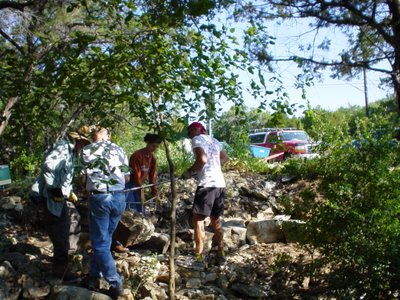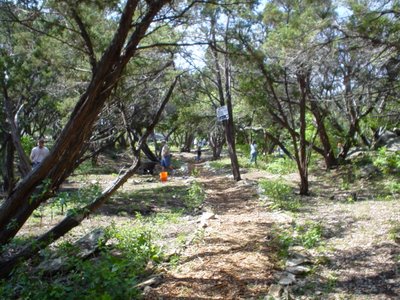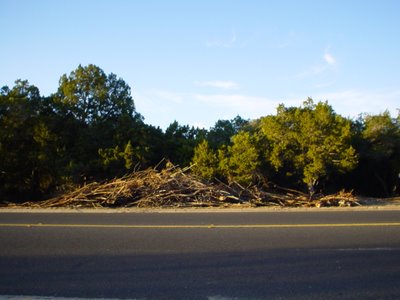The Story of Convict Hill Quarry ParkBy Heidi Armstrong Smith
The Texas State capital building, crowned with the Goddess of Liberty, reaches taller than the US Capital building in Washington, DC. The original design called for a limestone structure, but everyone knows the building appears to be made of sunset red granite (from Granite Mountain in Burnet County). Herein lies a fascinating story.
In 1881 the original capital building burned to the ground; only a pile of ashes remained. Officials decided the building must be reconstructed, of limestone, in a grand fashion. A spot south of town, Oatmanville (to be renamed Oak Hill) was negotiated as a quarry site, to which a railroad spur was built. The labor was supplied by the State of Texas. Convict Hill got its name because 8 convicts died while quarrying limestone between 1882 and 1885.
Texas’s first labor strike occurred in 1885. Stonecutters quarrying stone for our present State Capitol Building went on strike when a transient, who refused to join their union, hired on at a dollar a day less than the union men and then did more work. "Brock" was the offender's name. Union cutters threatened to walk out of the Oak Hill Quarry (now Convict Hill) if Brock was allowed to stay. Brock stood his ground, and the strike was on.
After the builders discovered that the limestone was too soft to support the grand design and contained flecks of iron that rusted and stained freshly dressed stones, granite from Marble Falls became the next material of choice. Although the limestone was unsuitable for the exterior of the building, stone from the quarry was used for the foundation and basement walls, cross walls, and backing for the exterior walls as well as elsewhere in the structure. Before the end of 1884 nearly 280,000 cubic feet of limestone had been delivered from the Oatmanville quarry. The rail line was abandoned and the rails removed in 1888.
Forward to early 2005 when Dr. Jim Turney created the Friends of the Convict Hill Quarry Park. Seeing the official Parks Sign erected in front of the property, Dr. Turney posted a flyer asking neighbors to help in the clean up of the park. Our first work day was scheduled April 16th, 2005, and 16 neighbors answered the call to help.
The entire front of the property was blocked by a wall of brush about 30 feet long, 10 feet high and 15 feet wide. One could not even access the property. On that day we filled two large dumpsters and lined the curb with a huge pile of brush. Subsequent work days have brought together the community to clean and enhance the park. Volunteers now include neighbors, Boy Scouts, Girl Scouts, interested families and individuals from all over Austin.
We are also working with: Joan Singh, Park Grounds Supervisor with Austin Parks & Recreation Department; Butch Smith, Senior Planner with Austin Parks & Recreation Department; Parc Smith, Superintendent with Environmental Corps; Lynda DeGroot with Central Texas Trail Tamers and a master naturalist. We brought together a team of diverse individuals, each focusing in their area of expertise, contributing immensely to the restoration of the park land. We have grown from a handful of neighborhood volunteers to a city-wide team. Jim, Gary and I are elated that others have the same vision we have...turning our little park into a neighborhood gem.
Several months ago we took the "shotgun" approach when seeking assistance. We contacted all of the people mentioned above, thinking one or two would choose to assist. They all noticed our commitment to the park after visiting and witnessing the improvements we had made. They fed off of our energy, and literally overnight we now have an entire team of experts willing to assist.
Now not only do we have a beautiful park, but we also have a brilliant piece of Texas history.
Resources1) Richard Zelade’s website,
http://www.io.com/~xeke/index.htm2)
http://www.awpi.com/3)
www.ohan.org4)
www.tsha.utexas.edu5)
http://www.preservationtexas.org/













